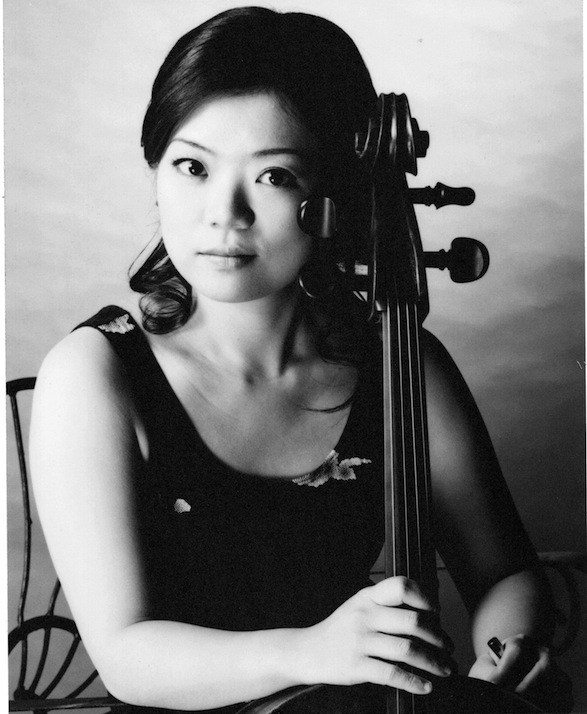Cellist I-Bei Lin has an impressive performance history, having given recitals throughout the world, including New Zealand, Thailand, Taiwan, much of Europe, and the United States. She received her bachelor’s degree from the Eastman School of Music and master’s and doctoral degrees from Northwestern University. She is currently an Associate Professor of Cello and Chair of Strings at the University of Hawai’i at Mānoa.
This review is of an unedited, live recording of a recital from April 18, 2011, featuring works by Beethoven, Donald Reid Womack, Debussy, and Gregor Piatigorsky. In the spirit of the “live” performance, I made the decision not to listen to the recording numerous times, but to imagine I was in attendance. I believe that this is the most objective approach.
The recital opened with the Sonata for Pianoforte and Cello, Op. 102, No.1, of Ludwig van Beethoven. This work belongs to the beginning of Beethoven’s late period. It is complex and unconventional in form. Dr. Lin played with confidence, indicating her mature grasp of Beethoven’s visionary ideas. The Adagio was especially praiseworthy in its pacing and sustained intensity. It was an auspicious beginning.
fff, composed in 2011 especially for Dr. Lin and pianist Jonathan Korth by Donald Reid Womack (b. 1966), followed the Beethoven. One might be excused for expecting that the title referred to the dynamic marking fortississimo and that a very loud piece was to ensue; the title, however, refers to its three pieces (falling, floating, flying) played without pause. Womack writes, “they are bound by a common theme of groundlessness, of having air between oneself and the earth”. These pieces conveyed their respective titles in a highly effective way that capitalized on Dr. Lin’s considerable talents, including a fluid technique and wide range of expressive timbres (Womack had previously written a solo piece for Dr. Lin in 2005 titled Scherzophrenic). The end result was a mesmerizing performance from both Dr. Lin and Mr. Korth.
The Cello Sonata of Claude Debussy closed the first half. This work, written in 1915, is one of the staples of the cello repertoire and deservedly so. French cellist Louis Rosoor (incorrectly cited as Louis Rosser in the program notes) claimed Debussy told him that thematic material from the sonata was related to dramatic characters, but Debussy denied this. Rosoor’s version is plausible, as this work is extremely mercurial, with sudden outbursts and mood changes throughout. Not only must the performer deal with the stylistic difficulties, but also overcome the myriad technical demands as well. To use a popular expression, Dr. Lin “nailed it!” in a highly nuanced performance.
The second half opened with a set of Taiwanese Folk Songs, which served a dual purpose. The most obvious was that Dr. Lin was honoring the music of her native Taiwan, but the second was the idea of bringing the audience back down to earth after the atmospheric fff and the emotional roller coaster of the Debussy. These pieces were played by Dr. Lin in a sincere and unpretentious manner.
Paganini’s 24th caprice for violin has been the basis for brilliant variations by many great composers. Piano works by Liszt, Brahms, and Rachmaninoff readily come to mind, but why should pianists have all the fun? The legendary cellist Gregor Piatigorsky (1903-1976) decided to write a set of variations on this caprice that allowed him to showcase his justly renowned technical prowess to the hilt. Dr. Lin took up the challenge of Piatigorsky’s Variations on a Theme of Paganini to end the recital. Taking a page from Edward Elgar, Piatigorsky wrote fourteen variations as musical portraits of famous friends. They are, in order, Pablo Casals, Paul Hindemith, Raya Garbousova, Erica Morini, Felix Salmond, Joseph Szigeti, Yehudi Menuhin, Nathan Milstein, Fritz Kreisler, Gregor Piatigorsky, Gaspar Cassado, Mischa Elman, Ennio Bolognini, Jascha Heifetz, and Vladimir Horowitz. The variations are often witty, but many take the form of inside jokes, as it is not always readily apparent how each variation connects to its named inspirations (for example, the Hindemith variation sounds nothing like Hindemith the composer). This is a virtuoso work that projects much better live than in recordings, as the visual aspect is an integral part of the experience. In any case, it is a highly pleasurable tour-de-force for the cellist. Dr. Lin tossed off the challenges with ease in a confident performance. The rousing finish ended the concert in style and the audience reacted with loud applause.
I must commend excellent pianist Jonathan Korth as an outstanding collaborator to Dr. Lin, ever sensitive to balance issues and flexible to the cellist’s every impulse.
In 2005, the late Edith Eisler wrote in the pages of this journal that Dr. Lin “is a very fine cellist.” In 2013, I must tip my hat to her and wholeheartedly agree with her assessment. Dr. Lin is a fine cellist, equally at home in wide-ranging styles and possessing the technique to make it all seem so easy.

